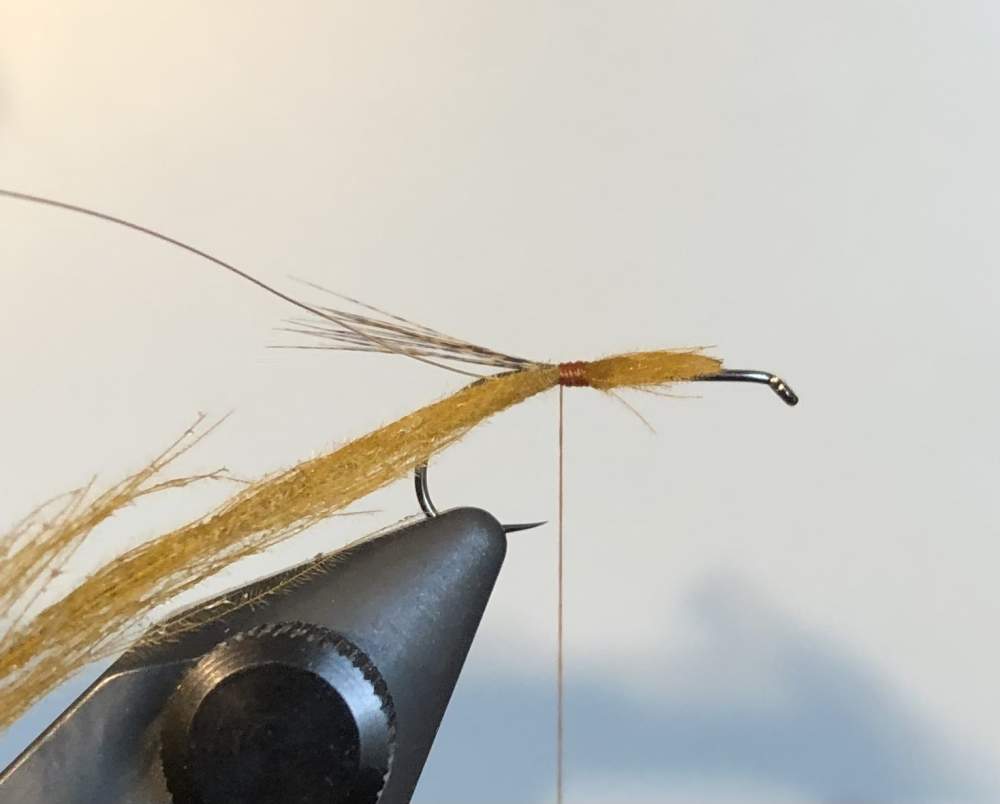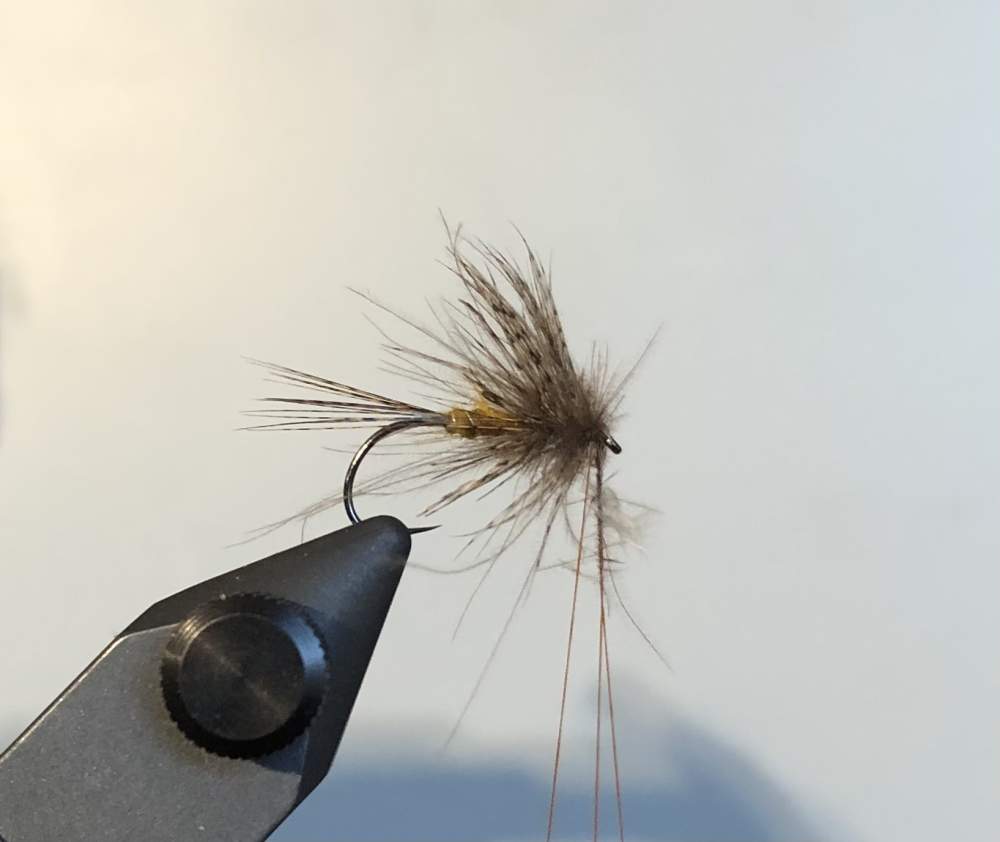Hiya, most of you are very familiar with my favourite CDC spider, the last couple of years I have taken the basic fly and been adding traditional spider feathers to them to match the hatch a bit closer. They have proven very successful so Iím going to share the tweek in a bit more detail.
This is the March Brown variant.
I use a FM ultimate dryfly hook in a size 10
Rust unithread
Reddish coc de Leon for the tail
Petitjean old yellow cdc feather for the body (this is an almost perfect greenwells colour when wet)
Ribbed with superfine gold wire
Two natural CDC feathers and a brown partridge back feather for the hackle.
Step 1.
Hook in vice , Start the thread

Step2.
Add 6-8 fibres of the coc de Leon roughly the same length as the hook shank and put one turn off thread under them to kick it up a little

Step3.
Tie in the gold wire and the tip of the Yellow CDC feather

Step4.
Twist the feather and wind on as the body, tie down and wrap the wire.

Step5.
Assemble the two natural cdc feathers with the partridge in a sandwich

Step6.
I use a Petitjean Magic tool to make this easier to handle, insert the sandwich into the big clip

Step7.
Transfer to the smaller clip and trim away the stalks

Step8.
Create dubbing loop and insert the ends of the feathers, releasing the clip

Step9.
Spin the twister and stroke it to make sure no fibres get trapped

Step10.
Wind the hackle forward making sure to stroke each turn backwards to prevent trapping fibres

Step11.
Whip finish and stroke fibres forward , apply a finish to the head

I fish this as a dry, itís highly visible and looks like a cripple or even a dun on the surface and if it starts to sink a little, it fishes like a spider. It dries really fast and I find it extremely versatile. The original had no extra game feather and it works really well as a general olive/upwing pattern. I have been experimenting with matching the naturals a little closer and these seem to work even better.
If you tie it with a lighter coc de Leon, gray dun thread, light natural cdc and grey partridge hackle on a size 10 , then itís a great olive upright.

On a size 12 with Olive dun thread, a dark coc de Leon tail and dark natural cdc with a waterhen hackle it makes a superb Large dark olive

I did some March browns with woodcock instead of partridge and they work well too, so there are no hard and fasts, itís more about the suggestion of patterns and shades

I used one yesterday during the March brown hatch and christened the New Steffen Iíve just made. You can see the fly in his jaw.

Had a nice one at long range with it too


